Imagine a pattern so bold and blending seamlessly into the wild, yet stands out in the crowd; this is the magic of tiger stripe camo.
The Tiger Camouflage is a captivating pattern of camouflage used for purposes in the field of hunting, military, fashion and hunting. Yet, it was originally to serve for military uses, being famous for its bold stripes and subdue earthy colors.
Table of Contents
Here, we have a guide that helps you to explore the world of tiger camouflage and how it is serving different areas of industries.
History of Tiger Striped Camo
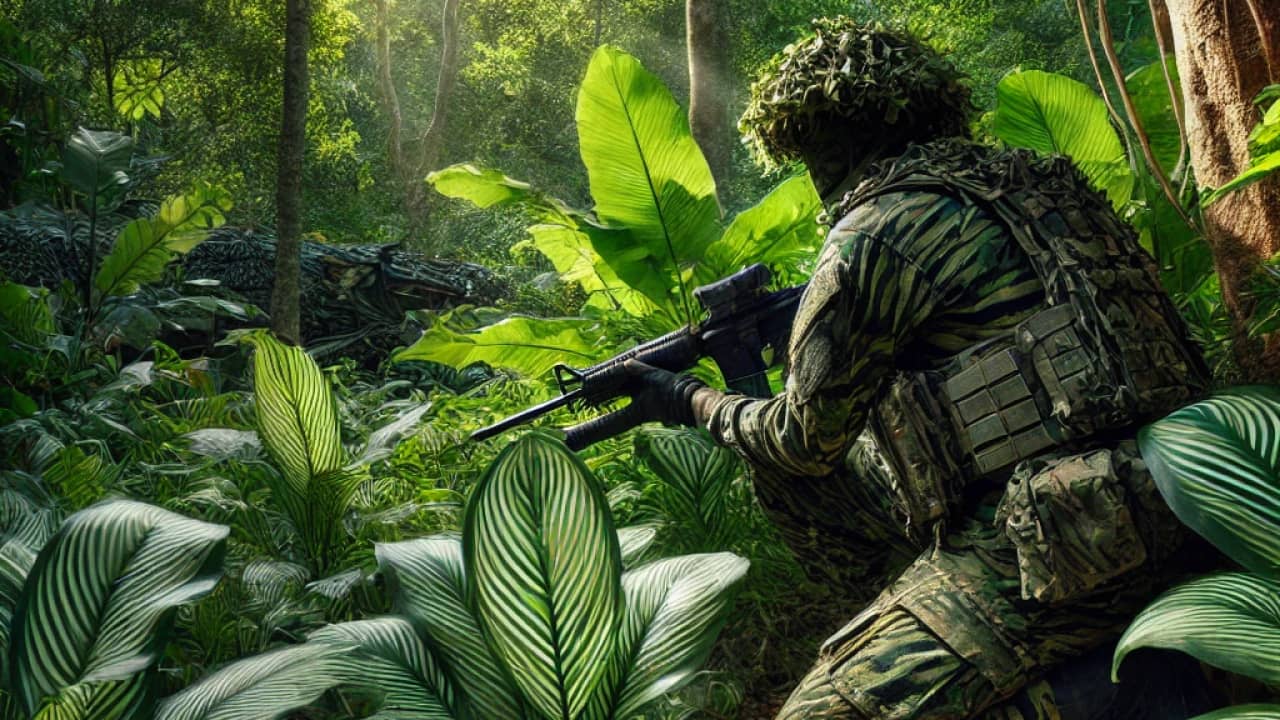
During the Vietnam War in the early 1960s, the concept of jungle stripe camo came into being. This was basically originated for helping the soldiers to blend themselves in the jungles of Southeast Asia. Not like the typical stripes, rather it has different shades of uneven and horizontal stripes which are brown, black and green in color. The purpose is to hide soldiers from enemies as the camo’s shape and color helps them in mimicking the surroundings of the jungle.
These stripy camoes were initially used by the U.S Special Forces, but later on it was in use by other military groups in Vietnam. After returning home, they brought the pattern along with them helping it to promote and become iconic in their civilian and military circle. In today’s era, it stands for military heritage as well as a rugged outdoor look.
The Design of Military Vietnam Tiger Camo
The design of a camo has a distinctive design yet recognizable. The pattern comprised of:
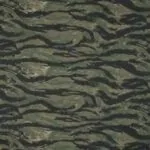
Irregular Stripes: It has irregular and uneven stripes forming a pattern which depicts natural foliage.
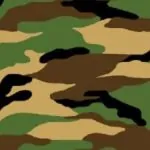
Color Palette: A traditional camo is a combination of colors limelight green, brown, dark, green, and black. The colors used here are good for blending with the jungle or forest areas.
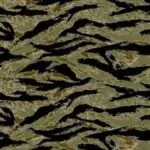
Horizontal Orientation: The stripes are horizontally oriented which makes it difficult to be seen in specific areas or surroundings.
Practical Uses of Striped Military Camouflage
Here are some of its key uses:
Military Use
The Stripe camo was used during the Vietnam War and still occasionally seen in military units worldwide. In the U.S., some special forces units use modified tiger stripe patterns for specific missions. The camo has its effectiveness in dense, leafy environments makes it a preferable choice for jungle warfare.
Hunting
Hunters in the U.S. often choose tropical stripe camouflage for its practical advantages. The pattern blends well with wooded areas, allowing hunters to move undetected by animals. For deer and other forest game, this camo provides an advantage in keeping the hunters concealed.
Fashion and Streetwear
Tiger Stripe Camoes have recently gained popularity in American fashion and streetwear. It appeals to fashion enthusiasts as it has a rugged, military-inspired style found at many brands. Jackets, pants, and accessories in tiger camouflage bring an edgy, tactical vibe to casual outfits.
Tiger Pattern vs. Other Camo Patterns
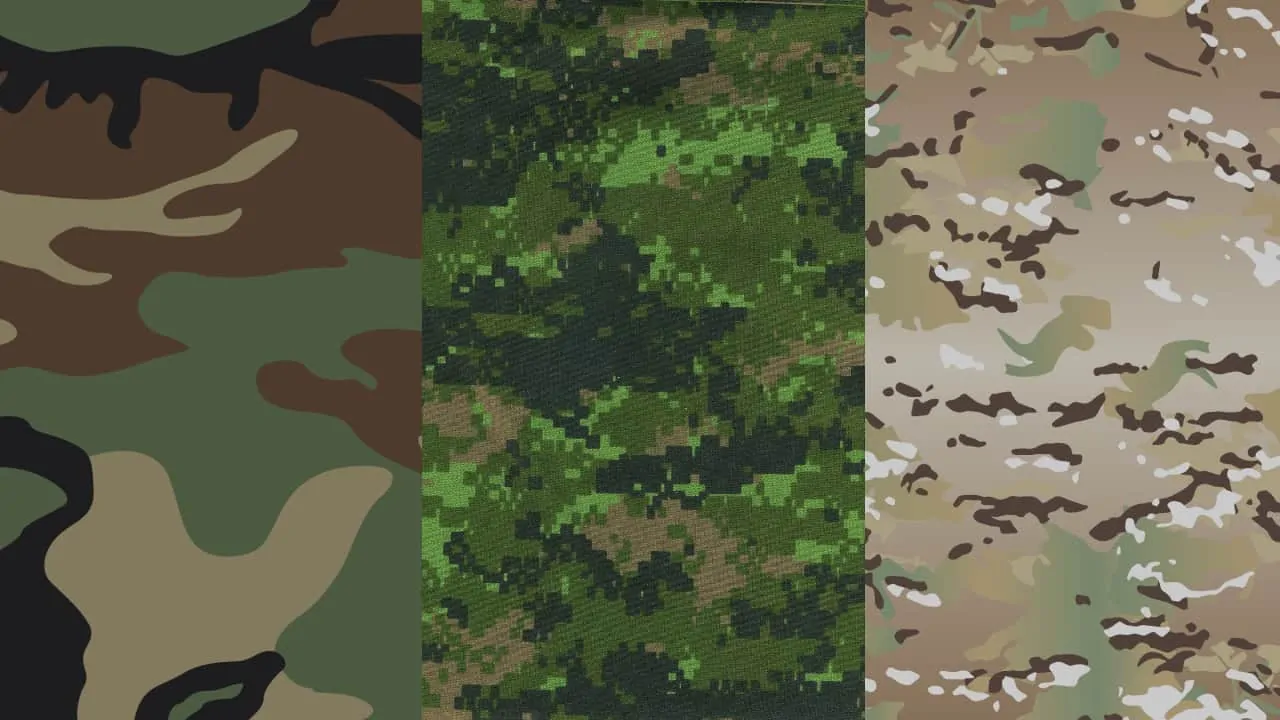
There are multiple tiger camo patterns and you can explore them as follows:
| Woodland Camo | Digital Camo | MultiCam |
| Woodland camo is a four color pattern like green, brown, black, and tan with larger blotches. | Digital camo is a pixelated pattern that uses small, square shapes in multiple shades. | MultiCam uses a combination of greens, browns, and tans with a blurred effect. |
| It was designed for forests and has been used by the U.S. military. Unlike tiger stripe, which uses stripes, woodland camo relies on larger, rounded shapes, providing a more generalized blending effect in forested areas. | This camo is widely used in modern military uniforms. Digital camo provides a modern approach to concealment, but it lacks the organic feel of tiger banding, which is more suited to natural, leafy environments. | This versatile camo is designed for different environments, from deserts to woodlands. The versatility of MultiCam makes it effective across various terrains, whereas the striped pattern is more specialized for forested and jungle areas. |
How to Style Jungle Stripe Camouflage
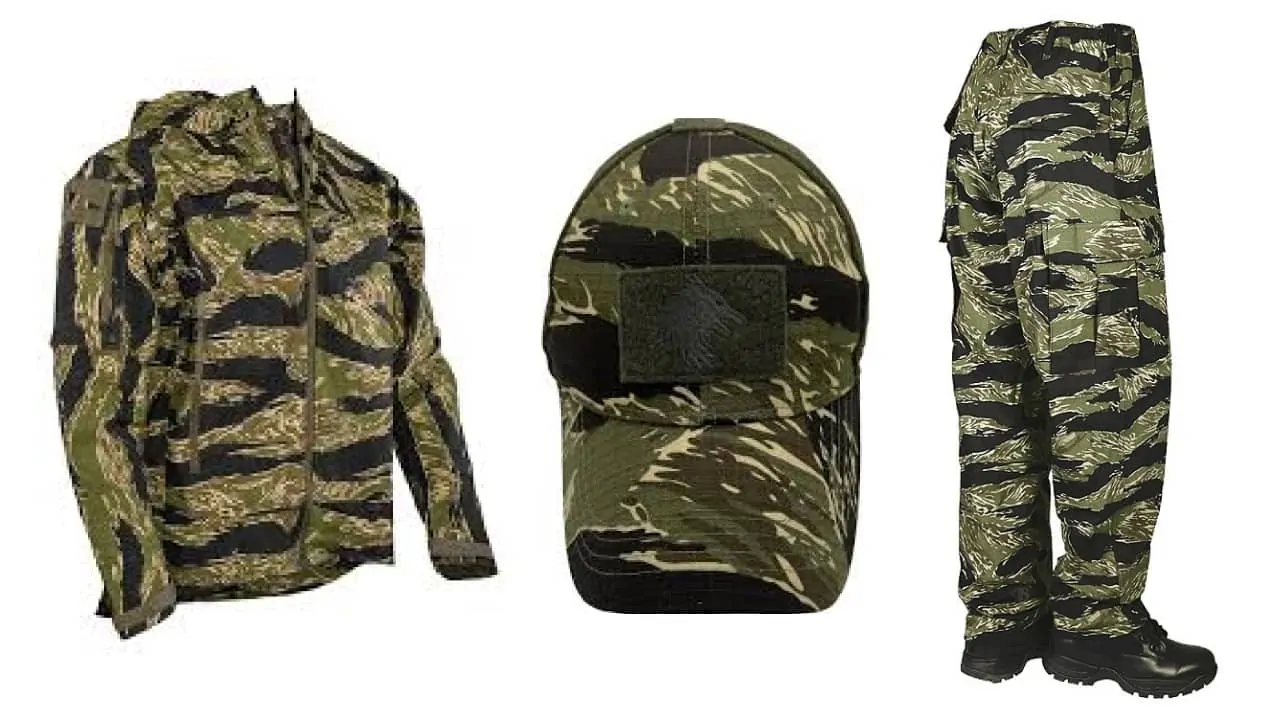
If you are interested in adding striped camo to your wardrobe. Here we have many ways for you to make you style a casual or rugged look:
- Jackets. The camo jackets pair well with neutral color tones such as grey or black pants, which creates a balanced look.
- Pants. Camo pants can be worn with a simple, solid-colored shirt to keep the outfit stylish.
- Accessories. Accessories such as an addition of hat, backpack, or pair of shoes in tiger pattern camo can add a subtle touch of this pattern to any outfit.
Tips for Buying Authentic Tiger-Patterned Camo
Here are some tips to keep in mind, if you’re up for authentic tiger stripe camo then :
- Visit Military Surplus Stores. These stores often sell real tiger pattern camo items, like jackets and pants, that meet military standards.
- Check the Material. Authentic striped camo is usually made from tough, outdoor-ready fabric. If you’re shopping online, read the product description to confirm material quality.
- Look at Brand Reputation. Some brands focus on military-inspired clothing and offer more authentic styles. Read and check reviews of customers to ensure quality and authenticity.
The Popularity of Camo Tiger Stripes in the U.S
Tiger Stripe Camoes are valuable in the U.S. because of its military history and its distinctive style. It was utilized at the time of the Vietnam War, carrying historical importance along with symbolic features of toughness and practicality.
From history buffs to hunters to style-conscious individuals, the appeal of Striped camo keeps growing. Its mix of function and style makes it a lasting favorite for many Americans.
Perspectives from Combat Officers and Hunters
Tiger Stripe camouflage, renowned for the distinctive pattern it has. Also, for a long time, it has been the choice for individuals needing reliable concealment in forested environments. Both experienced combat officers from the Vietnam War and seasoned hunters today can attest to its value in high-stakes settings.
Combat Officers’ Experiences
Combat officers who served in the Vietnam War often share their experiences with Tiger Stripe camo as part of their efforts to blend into the dense jungles. For instance, Lieutenant Colonel John Davis, a Vietnam veteran, recalls how tiger strip was uniquely effective in the chaotic, green canopies of Southeast Asia.
The irregular, bold stripes helped to disrupt the silhouette of a soldier, making it harder for the enemy to spot them. The psychological element of wearing Tiger Stripe camo also had an effect on the officers and soldiers which made them feel part of an elite group, especially those in special operations units like the U.S. Army’s MACV-SOG (Studies and Observations Group).
Hunters’ Perspective
Vietnam tiger camo is still a favorite among hunters in forested areas because it helps break up the human outline and blend naturally into the environment. Unlike regular hunting camo, which can look repetitive, tiger stripe’s unique pattern prevents wildlife from spotting familiar shapes, helping hunters get closer to their targets.
Experienced hunters, like Jack Thompson from the Appalachian woods, say that the camo’s blend of greens, browns, and blacks offers great concealment, especially in late summer and early fall when foliage is thick.
Tiger Stripe’s Lasting Appeal
Both combat officers and hunters find that the Striped camo pattern is practical, rugged, and an emblem of resilience. Its use by elite forces during wartime cemented its reputation, making it more than just camouflage—it became a symbol of history, strength, and the unique challenges faced in combat and hunting.
Comparing Two Tiger Camouflage Patterns in Different Settings
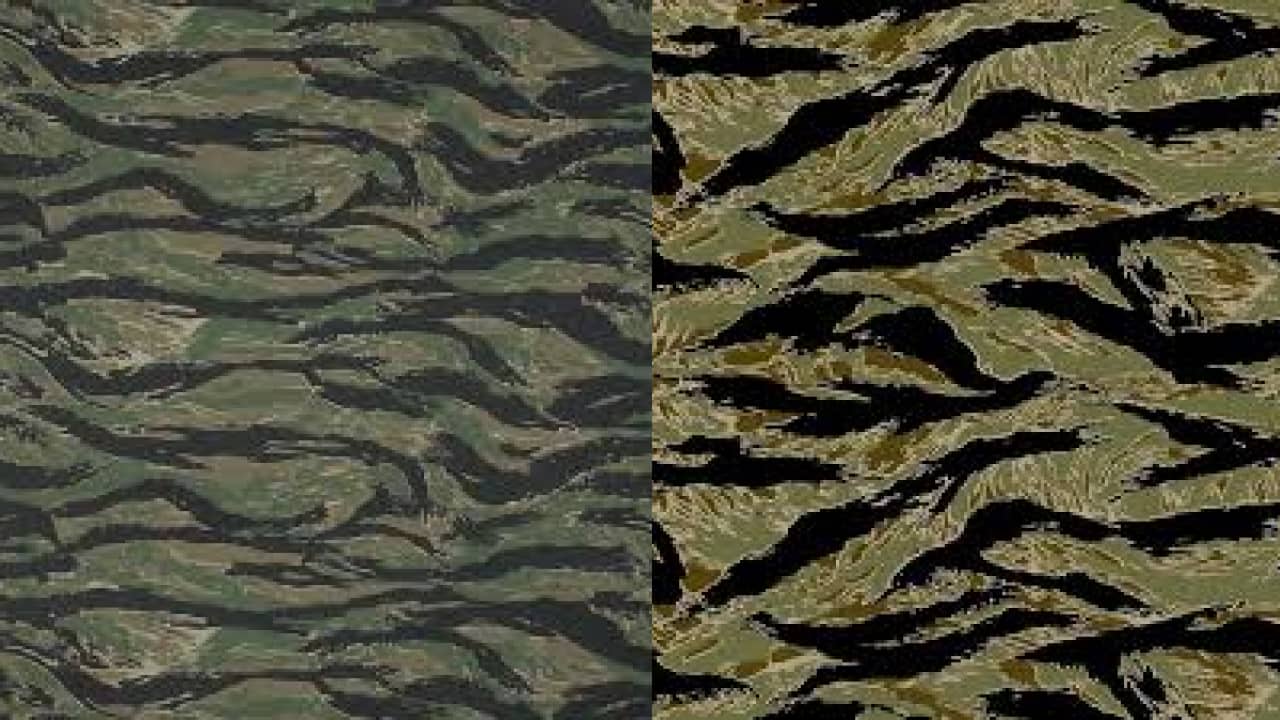
Comparison of two different tiger stripe camo patterns:
Classic Military Version
The left side showcases the traditional Jungle stripe camo with irregular green, black, and brown horizontal stripes used by U.S. troops in Vietnam. This pattern is ideal for dense, jungle-like environments.
Modern Hunting Variation
The right side displays a contemporary hunting version, adapted to softer earth tones for temperate forests common in North America, blending better with local foliage.
You Might Like to Read: A Comprehensive Guide for Animals that Camouflage
Conclusion
Tiger stripe camo is beyond a design, rather it’s a part of history having both practical use and unique style. If you are interested in hunting, fashion, or military influence, then striped camo helps you in blending with nature or makes you stand out in style. With its roots in U.S. military history and its ongoing popularity. Although, this camo pattern is still a go-to for many Americans.
